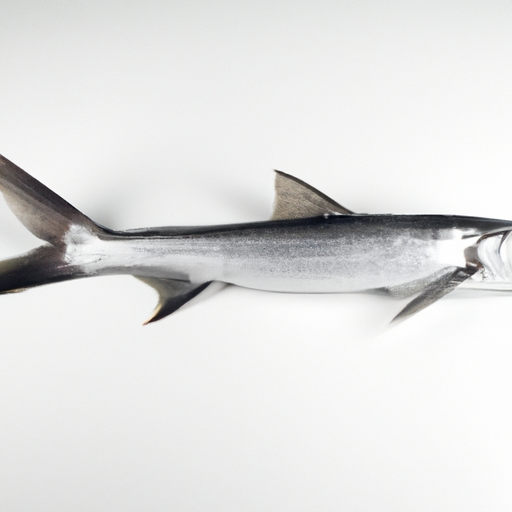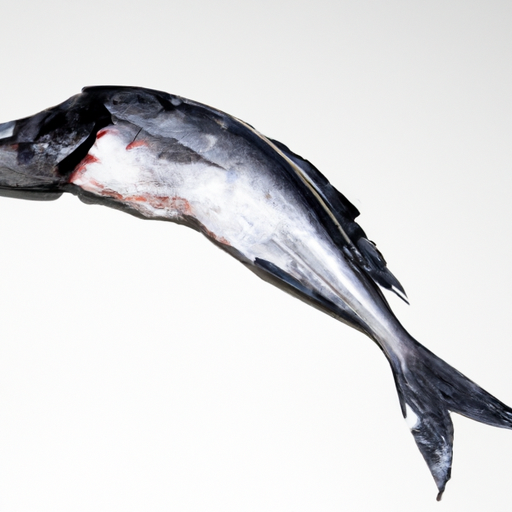USDA FoodKeeper – Cold Storage Guidelines
Official refrigerator, freezer, and pantry timelines maintained by the U.S. Department of Agriculture.
Visit USDA FoodKeeperHailing from the icy waters of Alaska, this unique seafood delicacy is a favorite among adventurous eaters. With a low risk of spoilage, it's crucial to enjoy it fresh within three days of purchase or store it in the freezer for longer enjoyment. Just be sure to savor it before those days are up!
30 most common foods with instant answers. Print it and stick it on your fridge—completely free! Want more? Upgrade to the complete guide with 70+ foods.
"Alaska Blackfish should be stored in the refrigerator at 40°F or below and consumed within 1-2 days for optimal safety and quality, according to USDA recommendations."


Freezer
Below 0°C
Wrap in airtight packaging before freezing
3 days
Off smell, slimy texture, discolored flesh
Can be used in fish stews or soups
Freshwater fish like trout or whitefish
Sure thing! So, expiration dates and best quality dates are actually quite different when it comes to Alaska Blackfish. The expiration date is more about safety. It tells you when the fish may no longer be safe to eat due to potential bacteria growth or spoilage. Once the expiration date has passed, it's best not to risk it. On the other hand, the best quality date is more about taste and texture. This date indicates when the fish may start to lose its freshness, flavor, and overall quality. It's still safe to eat after this date, but the taste and texture may not be as good. For example, if the expiration date on your Alaska Blackfish is tomorrow, it's probably not safe to eat it after that. However, if the best quality date is a few days past, it's still okay to eat, but it might not be as tasty. Personally, if the fish looks and smells fine after the best quality date, I'd still feel comfortable eating it, but that's just me!
To determine if Alaska Blackfish has spoiled, look for a slimy or sticky texture, off-putting odor, or any discoloration such as gray or yellowish patches. Fresh Alaska Blackfish should have a firm texture, a mild oceanic smell, and a shiny, silver appearance.
Hey there! Let's chat about Alaska Blackfish and some important food safety tips to keep in mind. While they can be delicious, like any other seafood, there are some risks associated with them. One common risk with Alaska Blackfish is the potential for foodborne illness if not handled and cooked properly. Symptoms like nausea, vomiting, and diarrhea can occur if the fish is contaminated with bacteria like Salmonella or Listeria. To reduce these risks, always make sure to cook Alaska Blackfish thoroughly until it reaches an internal temperature of 145°F (63°C). Additionally, ensure that you store the fish properly in the refrigerator at or below 40°F (4°C) to prevent bacterial growth. Personally, I always like to purchase my Alaska Blackfish from reputable sources with good food handling practices. It's also a good idea to wash your hands, utensils, and cooking surfaces thoroughly after handling raw fish to avoid cross-contamination. By following these simple tips, you can enjoy your Alaska Blackfish dishes safely and deliciously!
Ah, Alaska Blackfish, a delicious and nutritious catch! To keep these little guys fresh and tasty, here are some storage hacks and pro tips. First off, consider vacuum sealing your Blackfish fillets before freezing. This helps prevent freezer burn and keeps the flavor intact. If you don't have a vacuum sealer, double-bagging in heavy-duty freezer bags can also do the trick. Another nifty trick is to freeze the fish in individual portions. This way, you can easily thaw only what you need for a meal, reducing waste and ensuring freshness. If freezer space is limited (as it often is), try utilizing stackable containers or storage bags to maximize space. You can also label and date your packages for easy identification. And don't forget the importance of proper thawing! Avoid using hot water as it can cook the edges of the fish. Instead, thaw your Alaska Blackfish in the fridge overnight or under cold running water for quicker defrosting. I've tried these methods myself, and they've worked wonders in keeping my Alaska Blackfish fresh and tasty. Give them a go and enjoy your flavorful catch whenever you please!
Hey there! Let's chat about Alaska Blackfish – these little fish have some cool stories to tell! Did you know that Alaska Blackfish can survive in extreme conditions? They have antifreeze proteins in their blood that help them live in icy waters, like superheroes of the fish world! In Alaska Native cultures, Blackfish have been an important food source for centuries. People would catch them in the winter by cutting holes in the ice and using spears or traps. They were a valuable protein source in the cold, harsh winters. Here's a fun fact: Alaska Blackfish are known for being mouthbrooders, which means the male fish carries the eggs in his mouth to protect them until they hatch. Talk about dedicated dads! Next time you're in Alaska, keep an eye out for these resilient little fish. They may be small, but they sure have a big place in the history and culture of the Last Frontier.
Freezing Alaska Blackfish can alter its texture slightly when thawed. To minimize texture changes, wrap the fish tightly in plastic wrap and then place it in an airtight container before freezing. Thaw it slowly in the refrigerator to help preserve its texture as much as possible.
If Alaska Blackfish has been at room temperature for a few hours, it's best to discard it to avoid any risk of foodborne illness. Seafood, including Alaska Blackfish, should not be left out at room temperature for extended periods as it can quickly spoil and become unsafe to eat.
Once opened, Alaska Blackfish should be consumed within 1-2 days for optimal quality and safety. Ensure to store the leftovers in an airtight container in the refrigerator to maintain freshness. If there are any signs of spoilage like off smells or sliminess, it's best to discard it.
The type of container you use to store Alaska Blackfish can impact its shelf life. Opt for airtight containers or freezer bags to help maintain freshness and prevent freezer burn. Avoid using containers that are not airtight, as they can lead to faster deterioration of the fish.
It is generally safe to store Alaska Blackfish next to other seafood in the freezer as long as all items are properly wrapped or sealed to prevent cross-contamination. Keep seafood separated from other foods to avoid any potential transfer of odors or flavors between them.
Cooking Alaska Blackfish can extend its shelf life by a few days. Once cooked, store the fish in an airtight container in the refrigerator and consume it within 3 days. Ensure it is reheated properly before eating to maintain food safety standards.
Alaska Blackfish typically lasts longer when stored in colder temperatures, such as during winter months. Higher temperatures, common in summer, can accelerate bacterial growth and spoilage. To ensure the fish stays fresh, store it in the coldest part of the refrigerator or freezer regardless of the season.
When transporting Alaska Blackfish for a few hours, use a cooler with ice packs to keep the fish at a safe temperature. Ensure the fish is well wrapped to prevent leaks and cross-contamination with other foods. If you're traveling a longer distance, consider packing the cooler in a larger insulated bag for added insulation.
30 most common foods with instant answers. Print it and stick it on your fridge—completely free! Want more? Upgrade to the complete guide with 70+ foods.
Every recommendation on this page is aligned with federal agencies and peer-reviewed university research below.
Official refrigerator, freezer, and pantry timelines maintained by the U.S. Department of Agriculture.
Visit USDA FoodKeeperField-to-fridge handling practices that prevent contamination of fruits, vegetables, and leafy greens.
Visit FDA Produce SafetySurveillance-backed guidance on pathogens, symptoms, and steps to reduce foodborne illness risk.
Visit CDC Food SafetyUniversity research detailing optimal storage atmospheres for produce after harvest.
Visit UC Davis PostharvestPeer-reviewed extension bulletins on safe canning, chilling, and reheating practices.
Visit Penn State ExtensionNeed deeper reading? Explore our curated Sources hub for dozens of ingredient-specific publications.
Scan your food directly and get instant safety info using our AI-powered camera feature.
Frozen Foods
View expiration date and storage guide →
Meat & Poultry
View expiration date and storage guide →
Frozen Foods
View expiration date and storage guide →
Frozen Foods
View expiration date and storage guide →
Meat & Poultry
View expiration date and storage guide →
Frozen Foods
View expiration date and storage guide →
Frozen Foods
View expiration date and storage guide →
Frozen Foods
View expiration date and storage guide →
Frozen Desserts
View expiration date and storage guide →
Important: These are general guidelines based on authoritative sources listed above. Always use your best judgment and when in doubt, throw it out. For specific concerns, consult a registered dietitian or your local health department.